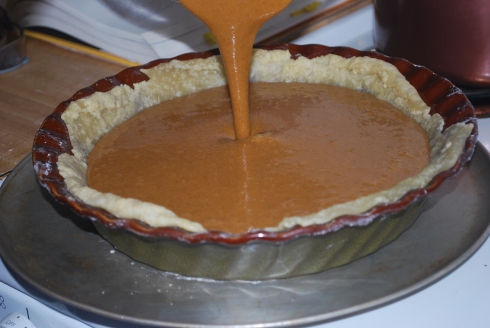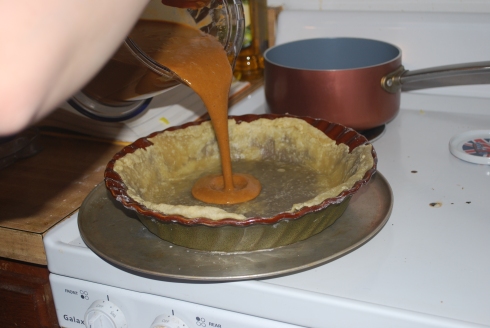I really struggle sometimes with the attitudes of parents to children with allergies, how they talk about allergies, and how they fundamentally misunderstand what it is to live an allergic life. I see this attitude of experience and understanding right alongside huge missteps and pretty offensive behavior. Unless you’ve lived it yourself, you probably don’t understand what it’s like.
To never be able to pick something off a sample tray and just pop it in your mouth.
To spend every party and every event on guard.
To go to a restaurant and play twenty questions about the menu, only at the end to have the sinking feeling that your server doesn’t actually care enough to give you a real answer.
To be excluded from every school pizza party, every slumber party pizza dinner, every “surprise! We bought lunch for everyone!”
To be at a new job, trying to make a good impression on coworkers, only to politely decline a tray of home baked goods and have to fend off diet shaming because “Oh, honey, you’re so thin, you don’t need to watch your weight!” And then suddenly, it’s a defense of allergies and all the searingly personal questions that follow. “How long have you been allergic?” “What’s your reaction?” “Have you tried Lactaid?” “My friend’s cousin’s brother’s ex-wife used to be allergic to milk, but she outgrew it and now she’s just fine. Have you considered that?”
To be six years old and know you have to be careful, surrounded by tiny little six year old monsters desperate to find any sign of weakness, and have your difference outed publically.
To be chased around the cafeteria with a carton of milk, only to be yelled at by the grown ups for yelling, because secretly, they too think you’re a freak, making it all up, and deserve it.
To spend your entire life knowing that you’ll never be normal. That this tiny little difference which should be oh so insignificant means the world to everyone around you. That you are utterly and forever apart from the world three times a day plus snacks, on social occasions and big celebrations, in every day life, at every moment of every day you are different and not One Of Us.
To watch on organized trips or at summer camp when vegetarians, who eat differently by choice, are given separate meals and different options, but being told with an allergy to make do with just salad or a pbj.
To stare at your own child, covered in hives after eating, and experience this gut wrenching terror that she’ll be doomed to the same childhood of terror and shame and ostracizing, and to put on a good face so as not to scare her or your partner.
To feed your baby something you’ve spent your whole life thinking of as poison, in the interest of “testing” and appeasing societal pressure to make her as normal as possible. And when she has no reaction, to feel guilty when you realize a part of you hoped she would be like you, and you wouldn’t feel so alone.
To bow and scrape and plead with thankfulness when someone deigns to make an exception, to order you a special meal at an event, who actually remembered that you exist. To be utterly grateful at the meager scraps they throw you. And to burst into tears when someone actually goes above and beyond, and to have those memories indelibly etched forever on your conscious.
Like the time we attended a murder mystery weekend, and after a twenty minute conversation with the head chef on Friday night, the following lunch, I was presented with the most beautiful plate of vegan risotto I have ever seen. A veritable mountain of it, and so delicious my companions told me it was better than anything out on the regular buffet.
Like the caterer for my wedding who said it would be no problem at all to make the entire event dairy free in such a way the guests would never even notice.
Like being 25 years old, out of town for my brother-in-law’s wedding, and they took us to a vegan restaurant, where I tasted something as mundane as a Boston cream pie for the first time in my life.
Walking into a new restaurant and telling them I have a dairy allergy, and then bursting into tears in front of the poor server when she presented me with a separate dairy menu, listing everything that was safe for me to eat.
To be nearly thirty years old before feeling like it doesn’t matter how other people define my food.


